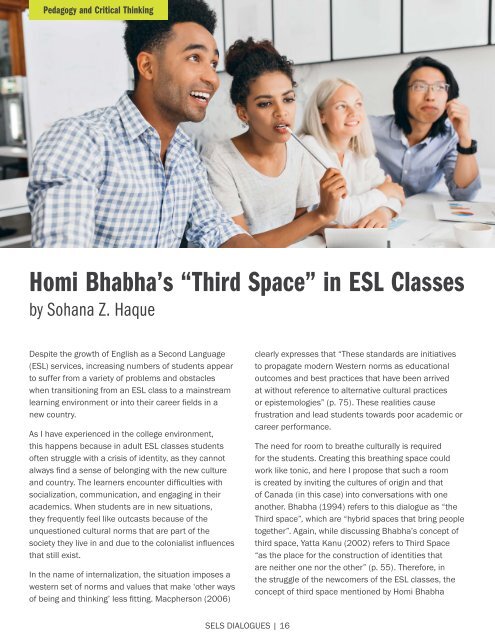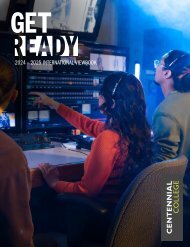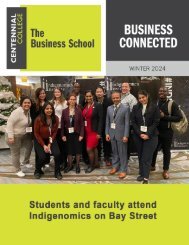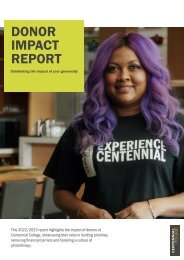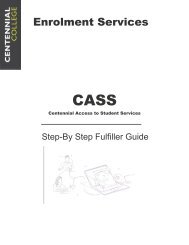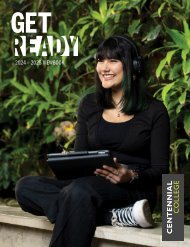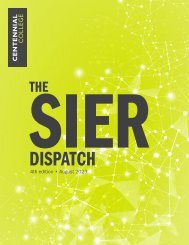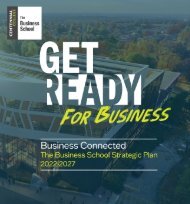SELS Dialogues Journal Volume 3 Issue 1
A diverse collection of articles, each offering a unique perspective and contributing to the ever-expanding landscape of knowledge and creativity.
A diverse collection of articles, each offering a unique perspective and contributing to the ever-expanding landscape of knowledge and creativity.
You also want an ePaper? Increase the reach of your titles
YUMPU automatically turns print PDFs into web optimized ePapers that Google loves.
Pedagogy and Critical Thinking<br />
Homi Bhabha’s “Third Space” in ESL Classes<br />
by Sohana Z. Haque<br />
Despite the growth of English as a Second Language<br />
(ESL) services, increasing numbers of students appear<br />
to suffer from a variety of problems and obstacles<br />
when transitioning from an ESL class to a mainstream<br />
learning environment or into their career fields in a<br />
new country.<br />
As I have experienced in the college environment,<br />
this happens because in adult ESL classes students<br />
often struggle with a crisis of identity, as they cannot<br />
always find a sense of belonging with the new culture<br />
and country. The learners encounter difficulties with<br />
socialization, communication, and engaging in their<br />
academics. When students are in new situations,<br />
they frequently feel like outcasts because of the<br />
unquestioned cultural norms that are part of the<br />
society they live in and due to the colonialist influences<br />
that still exist.<br />
In the name of internalization, the situation imposes a<br />
western set of norms and values that make ‘other ways<br />
of being and thinking’ less fitting. Macpherson (2006)<br />
clearly expresses that “These standards are initiatives<br />
to propagate modern Western norms as educational<br />
outcomes and best practices that have been arrived<br />
at without reference to alternative cultural practices<br />
or epistemologies” (p. 75). These realities cause<br />
frustration and lead students towards poor academic or<br />
career performance.<br />
The need for room to breathe culturally is required<br />
for the students. Creating this breathing space could<br />
work like tonic, and here I propose that such a room<br />
is created by inviting the cultures of origin and that<br />
of Canada (in this case) into conversations with one<br />
another. Bhabha (1994) refers to this dialogue as “the<br />
Third space”, which are “hybrid spaces that bring people<br />
together”. Again, while discussing Bhabha’s concept of<br />
third space, Yatta Kanu (2002) refers to Third Space<br />
“as the place for the construction of identities that<br />
are neither one nor the other” (p. 55). Therefore, in<br />
the struggle of the newcomers of the ESL classes, the<br />
concept of third space mentioned by Homi Bhabha<br />
<strong>SELS</strong> DIALOGUES | 16


